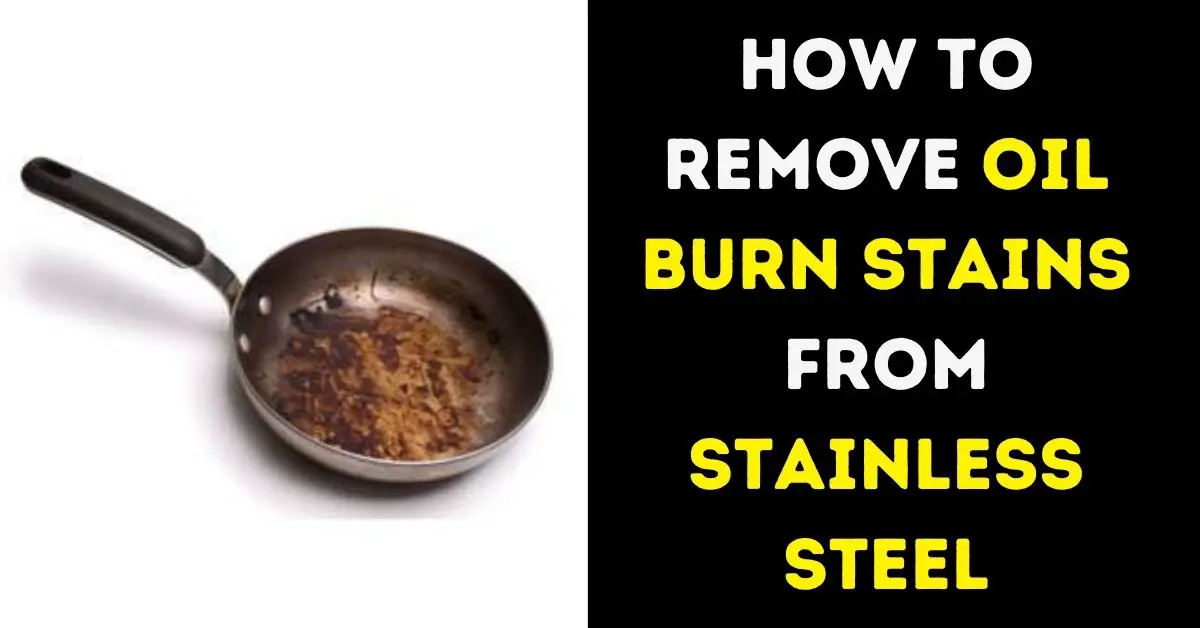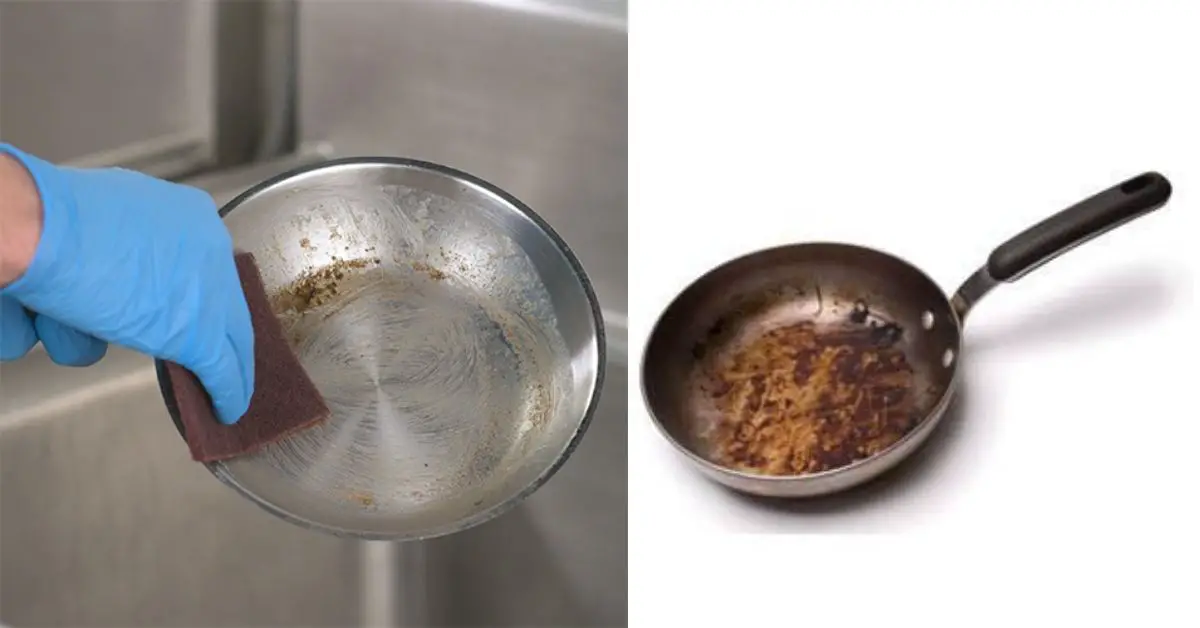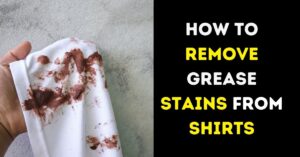
Stainless steel has always been revered for its elegant aesthetics, durability, and remarkable resistance to corrosion. However, even this resilient material faces its share of challenges, with oil burn stains being one of them. In this guide, we’ll explain why oil burn stains occur, the importance of preserving stainless steel’s appearance and hygiene, and provide effective methods to remove these stubborn stains. Let’s get started!
3 Methods for Removing Oil Burn Stains

Method 1: Using Baking Soda and Vinegar
Oil burn stains, though stubborn, can be no match for the powerful combination of baking soda and vinegar. Follow these simple steps to restore the gleam to your stainless steel:
Step 1: Create the Paste
In a bowl, mix equal parts of baking soda and vinegar to form a paste. Ensure the affected stainless steel surface is clean and dry before proceeding.
Step 2: Apply the Paste
Using a soft cloth or non-abrasive brush, apply the baking soda and vinegar paste directly onto the oil burn stain. Spread the paste evenly, covering the entire affected area.
Step 3: Let it Work
Let the mixture sit on the stain for a few minutes. The mild abrasive quality of baking soda and the acidic nature of vinegar will collaborate to effectively dissolve and remove the oil burn mark.
Step 4: Gentle Scrubbing
After the waiting period, gently scrub the stain with the soft cloth or brush, following the direction of the stainless steel grain. Be mindful not to apply excessive pressure to avoid damaging the surface. However, avoid using an abrasive brush or scrubber to prevent scratching the stainless steel surface. Always test the paste on a small, inconspicuous area before applying it to the entire stain to ensure compatibility.
Step 5: Rinse and Dry
Thoroughly rinse the treated area with clean water to remove any residue from the baking soda and vinegar paste. Dry the surface using a soft, clean cloth to reveal the restored brilliance of your stainless steel.
By following these easy steps, you can effectively remove oil burn stains from your stainless steel surfaces and restore their natural shine.
Method 2: Lemon and Salt Scrub
Harness the natural power of lemon to combat oil-burn stains with this citrusy solution:
Step 1: Acidic Dissolving
Slice a fresh lemon and extract its juice, taking advantage of its powerful acidic properties.
Lemons’ natural acidity works wonders in dissolving and loosening tough oil burn stains, making them easier to remove.
Step 2: Creating the Scrub
In a small bowl, mix the extracted lemon juice with a few teaspoons of salt to form a gritty yet gentle paste. The combination of lemon juice and salt creates an effective scrub that will aid in lifting the stubborn stains from the stainless steel surface.
Step 3: Applying the Scrub
Ensure the affected area is clean and dry before applying the lemon and salt scrub.
Take a soft cloth or sponge and gently rub the mixture onto the stain, focusing on the specific affected area. Use light pressure to avoid scratching the stainless steel surface while effectively targeting the oil burn stains.
Step 4: Rinse and Wipe
After applying the scrub, allow it to sit on the stain for a few minutes to allow the lemon’s acidic properties to work on the stubborn oil marks. Take a clean damp cloth and wipe away the scrub from the surface, along with the loosened stains.
Step 5: Alternative Citrus Options
If lemons are not readily available, don’t fret! You can use other citrus fruits like oranges or limes as alternative options. These citrus fruits also possess similar stain-fighting qualities due to their natural acidity, making them effective substitutes in this scrub.
Remember, this lemon and salt scrub is an eco-friendly and natural way to combat oil burn stains without resorting to harsh chemicals.
Other Alternative Methods for Removing Stubborn Stains
While most oil burn stains can be effectively removed using the methods mentioned earlier, some stains may prove to be particularly tenacious. In such cases, here are alternative approaches to consider for those stubborn stains:
Vinegar and Salt Paste: For an extra boost of stain-fighting power, create a paste using vinegar and salt. The combination of vinegar’s acidity and salt’s abrasive nature can help break down even the toughest stains.
However, exercise caution when using abrasive substances, as they may scratch or damage the stainless steel surface.
Baking Soda and Hydrogen Peroxide: Mix baking soda with hydrogen peroxide to form a thick paste. This dynamic duo can work wonders on stubborn stains.
The baking soda’s gentle abrasiveness combined with the bleaching properties of hydrogen peroxide can help lift even deeply ingrained oil burn stains.
Stainless Steel Cleaner with Fine Steel Wool: In cases where traditional methods fall short, you may consider using a stainless steel cleaner with fine-grade steel wool. This approach should be approached with caution, as steel wool is more abrasive than other cleaning tools.
Precautions to be Considered Before Trying Alternative Methods
Before attempting alternative methods, it’s important to take precautions to ensure the safety of your stainless steel surfaces. Begin by testing any abrasive solutions or materials in an inconspicuous area to gauge potential damage or scratching.
If you’re using abrasive materials like steel wool, use gentle pressure to avoid excessive scrubbing and potential scratches. Always scrub in the direction of the stainless steel grain when using abrasive tools to minimize visible scratches.
Additionally, steer clear of harsh chemicals or cleaners not designed for stainless steel, as they could cause irreversible damage. By approaching the process with caution and consideration, you can explore alternative stain-removal methods while preserving the integrity and appearance of your stainless steel surfaces. Remember, achieving optimal results relies on patience and employing gentle techniques.
FAQs
How do you remove burnt oil from stainless steel?
This method for cleaning scorched pans is incredibly straightforward and effective for a wide range of metallic surfaces. Just sprinkle some salt onto the burnt section, and let it sit for at least 5 to 10 minutes, and then use a sponge or scouring pad to scrub it away. Salt’s abrasive properties make it function much like powdered cleansers in this regard.
How to remove burnt stains from stainless steel without baking soda?
You can simply add a few cups of water and an equal amount of white vinegar to the bottom of the burnt pan. Then, heat the mixture on the stove and allow it to come to a boil. After it has boiled for a few minutes, remove it from the heat and drain it.
How do you clean stainless steel without damaging it?
If you want a natural shine on your pan, olive oil, white vinegar, or a stainless steel cleaner can be your best option. Use a gentle microfiber pad or a dish brush to prevent scuffs, apply a light coating of mineral oil to avoid grime, and if any stainless steel cookware is left in the sink, wash it right away.
Final Thoughts
Swift and proper stain removal are essential for maintaining the allure of stainless steel surfaces. With the methods provided, bid farewell to oil burn stains and welcome back the radiance of your stainless steel.
Apply these techniques with confidence, and remember to test in inconspicuous areas. Regular cleaning and gentle practices will safeguard your stainless steel’s beauty.






